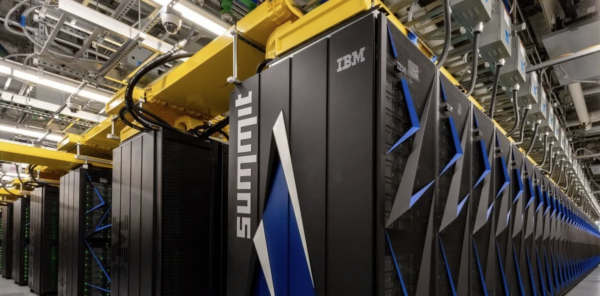Over the course of the pandemic, the crucial role of high-performance computing and artificial intelligence in treating disease has become abundantly clear. Even as viral disease sits squarely in supercomputing’s crosshairs, however, mental illness has remained relatively foreign to the computational medicine world. Now, a collaboration between Oak Ridge National Laboratory (ORNL), Cincinnati Children’s Hospital, the University of Cincinnati and the University of Colorado is looking to change that, working with the largest supercomputer in the U.S. in an attempt to better understand the development of mental health in children.
“Even before the COVID-19 pandemic began, it was clear that today’s children are experiencing an unprecedented level of stress that has led to sharp growth in many types of mental disorders,” explained John Pestian, a professor of pediatrics, psychiatry and biomedical informatics at the Cincinnati Children’s Hospital Medical Center, in an interview with HPCwire. “The disruptions, isolations and personal losses caused by the pandemic have only made things worse for children. … Unfortunately, compared to other areas of medical care, innovations in mental health treatment have not kept pace with important advances in technology, such as the rapid growth of computing power.”
Pestian, along with dozens of colleagues, is working to leverage a large collection of health data to gain valuable insights into how children’s mental health develops—and which factors affect the various outcomes. But conducting this kind of research, at this scale, meant enlisting major computing resources.
Luckily, Pestian is also a joint faculty member with ORNL, host of Summit—the country’s most powerful publicly ranked supercomputer. The IBM-built system, deployed in 2018, still ranks second on the global Top500 list of the world’s most powerful supercomputers as well.

“We are working with Oak Ridge National Laboratory … to develop the first decision support tool capable of analyzing all of the many significant factors that can set a child on a course toward becoming an adult with severe anxiety, depression or suicidal ideation,” Pestian said. “We are working to train [Summit] how to weigh a massively complex set of factors—which will combine data about an individual’s genetic traits, medical history, environmental exposures, demographics and other social determinants of health with their speech patterns, body language and other behaviors.”
“From this, we seek to calculate a child’s mental health trajectory, much like the curves used in a pediatric growth chart that show where a child stands relative to norms for weight, height and so on,” he continued. “Ultimately, clinicians, counselors and others would be able to use this information to decide when and how to intervene with services that may prevent early mental illness from carrying forward into adulthood.”
Pestian explained that establishing this sort of trajectory relies on “thousands of contributing factors working with and against each other as a child grows,” assembled using deidentified data from electronic medical records from millions of patient encounters, which is complemented with overlaid data on local environmental conditions, socioeconomic status and other external factors. Pestian said that as the research continues, they will begin to incorporate gene variant data as well.
This research, of course, is well beyond the capabilities of the computer systems at hospitals, let alone the workstations available to psychiatrists.
“We need to use a supercomputer to begin to understand the networked activity surging through our brains,” Pestian said. “The task is at least as complex as charting pathways through galaxies with billions of stars. … Through our unique collaboration with Oak Ridge, we can combine our clinical and computational expertise to develop near-real-time visualizations of patient-specific mental health trajectories. This will enable earlier identification of patients with clinically-elevated symptoms and connect them to services, leading to better outcomes and quality of life.”
It’s still early days for the team’s research, but Pestian is excited about the promise it represents for the future of mental health.
“Currently we are training the algorithm and we plan to publish more about our progress in peer-reviewed scientific journals,” he said. “Within several months to a year, we hope to have an initial trajectory tool available for select clinicians to evaluate. As the system is refined, we plan to seek the approvals needed to scale-up and roll out the tool. While the process may still take years, it becomes possible now thanks to the large amounts of data that are becoming available through digital medical records and advances in artificial intelligence-based algorithms. This collaboration truly reflects a new era in mental health research.”




























































